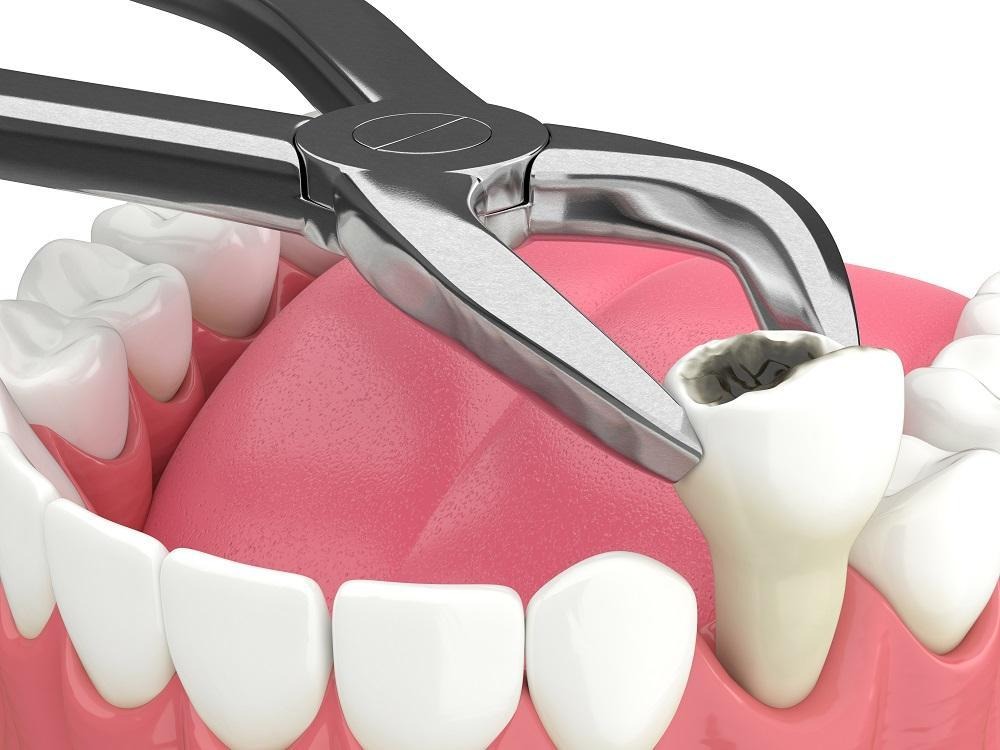Imagine biting into something cold or sweet and suddenly feeling a sharp, throbbing pain that won’t go away. Many people instantly assume that such pain means the tooth has to be pulled out. The thought of extraction can be frightening, and while sometimes it’s the right choice, it’s not always the only or best one. Severe tooth pain is a signal that something deeper is happening, but in most cases, dentists can save the tooth through various treatments.
This article explores what causes severe tooth pain, how dentists determine whether extraction is necessary, what alternatives exist, and why saving natural teeth is almost always the priority. You’ll also learn what to expect if Tooth extraction becomes unavoidable and how to prevent painful problems from developing again.
Dental pain can come from a wide range of issues, and not all of them require extraction. The tooth structure contains multiple layers: the enamel, the dentin beneath it, and finally the pulp, which holds nerves and blood vessels. When bacteria, trauma, or decay reach this sensitive inner layer, it triggers inflammation and pressure, leading to intense pain.
Sometimes, however, the source of discomfort isn’t even inside the tooth. Pain may result from gum infections, sinus problems, or jaw issues. For example, a person might feel pain in the upper molars due to sinus pressure, or experience jaw soreness caused by teeth grinding.
Deep tooth decay is one of the most common culprits. When cavities go untreated, bacteria eat through the enamel and reach the pulp, causing infection and inflammation. Gum disease can also create deep pockets of bacteria around the tooth, resulting in abscesses that throb with pressure.
Cracks or fractures can expose nerves and make a tooth painfully sensitive to temperature changes. Impacted wisdom teeth can cause swelling and radiating pain through the jaw. Even habits like clenching or grinding teeth at night can lead to muscle pain that mimics toothache. Each cause requires a different treatment plan. This is why identifying the true source of pain is essential before deciding whether extraction is necessary.
When a patient comes in with severe dental pain, the dentist begins with a detailed examination. They visually inspect the teeth, gums, and surrounding tissues to look for visible signs of decay, infection, or damage. X-rays are then taken to reveal what can’t be seen on the surface. These images help identify infections inside the root, bone loss due to gum disease, or cracks that extend below the gumline. Sometimes, specialized tests are used, such as tapping on the tooth or applying hot and cold stimuli to gauge nerve response.
Many people try to self-diagnose their tooth pain, assuming it’s a cavity or an abscess, but dental pain can be deceptive. A tooth may hurt even if it’s not the actual source of the problem, or an infection might be developing silently without visible swelling. By pinpointing the real cause, the dentist can choose the right treatment. In many cases, pain can be resolved without removing the tooth at all. Modern diagnostics allow dentists to identify problems early and preserve teeth that might once have been lost to extraction.
Dentists prefer to save natural teeth whenever possible, but there are times when extraction becomes the only safe choice. When the tooth is too damaged to restore, or infection threatens to spread, removal may be necessary to protect overall health. A tooth may need extraction if it has severe decay that extends deep into the root and cannot be repaired through a root canal. In other cases, gum disease may have destroyed the bone structure supporting the tooth, leaving it loose and unstable.
Severe infections or abscesses that cannot be treated with antibiotics or root canal therapy often make extraction inevitable. Similarly, a tooth that is cracked below the gumline cannot be repaired and may cause ongoing pain or inflammation if left in place. Impacted wisdom teeth can also lead to chronic discomfort, swelling, and infection, necessitating surgical removal. Extraction, though sometimes unavoidable, is not a failure it’s a way to stop the spread of infection, relieve pain, and protect your overall oral health. Dentists perform it only after confirming that other restorative methods cannot save the tooth.
One of the most effective ways to treat severe pain caused by infection inside the tooth is root canal therapy. During this procedure, the dentist removes the infected pulp, disinfects the canals, and seals the space to prevent future infection. A crown is usually placed over the tooth afterward to strengthen and protect it. Root canal therapy allows you to keep your natural tooth while eliminating pain and infection.
When a tooth is structurally weakened but not infected, a crown can provide the necessary support. The crown covers the entire visible part of the tooth, restoring its function and protecting it from further damage. This approach is ideal for teeth that have large fillings, cracks, or mild fractures.
Sometimes, severe pain doesn’t come from the tooth itself but from the surrounding gums. Periodontal therapy, such as scaling and root planing, removes plaque and bacteria from beneath the gums and allows healing to occur. In some cases, antibiotic treatment or laser therapy may be used to eliminate infection and restore gum health.
For teeth affected by smaller cavities or surface cracks, fillings or inlays can restore the tooth’s integrity. Modern materials such as composite resins or porcelain blend naturally with your existing teeth and provide durable protection.
If your pain is caused by mild nerve irritation rather than infection, your dentist might recommend desensitizing treatments or fluoride varnishes. Specialized toothpaste and topical solutions can significantly reduce discomfort without invasive procedures.
These options show that tooth extraction isn’t always the immediate answer. With today’s advanced dental care, saving a tooth is often entirely possible.
Your natural teeth are uniquely suited for chewing, speaking, and maintaining the shape of your face. When a tooth is lost, the remaining teeth can shift, disrupting your bite and making it harder to chew comfortably.
Natural teeth also provide the best tactile sensation and control when eating. Artificial replacements like dentures or bridges, while effective, never fully replicate the feel and function of your own teeth.
When a tooth is extracted, the jawbone beneath it begins to shrink because it no longer receives stimulation from chewing. Over time, this bone loss can lead to a sunken facial appearance and affect surrounding teeth. By keeping your natural teeth, you preserve bone health and facial structure. Additionally, saving a tooth usually costs less and takes less time than replacing it with an implant or bridge. Whenever possible, preserving the natural tooth provides the most stable and long-lasting results.
Tooth pain is never something to ignore. It is your body’s way of alerting you to a problem. When left untreated, what begins as mild sensitivity or occasional discomfort can quickly progress into a serious infection. Bacteria can spread from the tooth pulp to the gums and even to the jawbone.
If the infection enters the bloodstream, it can lead to a condition called sepsis, which is life-threatening. Ignoring dental pain can also result in permanent damage to nerves and surrounding tissues. Eventually, the tooth may become unsalvageable, requiring extraction that could have been avoided with earlier treatment. The longer pain persists, the more complex and costly the treatment becomes. Seeking professional care as soon as discomfort arises is always the best way to protect both your teeth and your overall health.
If your dentist determines that extraction is the best or only option, there’s no need to fear. The procedure is routine and performed under local anesthesia to ensure complete comfort. In some cases, sedation is offered for anxious patients. The dentist carefully loosens the tooth from its socket and removes it with minimal trauma to the surrounding bone and tissue. The area is then cleaned thoroughly to prevent infection. Afterward, you may receive antibiotics or pain relief medication to support healing.
Post-extraction care is simple but essential. You’ll be advised to rest, avoid vigorous activity, and eat soft foods for a few days. Keeping the area clean with gentle rinsing and following your dentist’s instructions helps prevent complications like dry socket. Within a few days, the site begins to heal naturally. Once healing is complete, your dentist may recommend tooth replacement options, such as implants, bridges, or partial dentures, to maintain function and prevent shifting of nearby teeth.
The simplest and most effective way to avoid dental pain is through daily brushing and flossing. Using fluoride toothpaste strengthens enamel and helps prevent decay. Regular flossing removes plaque that builds up between teeth, protecting against gum disease.
Visiting dentist every six months allows for early detection of problems like cavities, worn fillings, or gum inflammation before they become painful. Professional cleanings remove tartar that brushing alone cannot eliminate.
Avoiding hard foods, chewing ice, or using your teeth as tools helps prevent cracks and fractures. If you grind your teeth at night, wearing a custom mouthguard can protect them from wear.
Diet also plays an important role. Reducing sugary snacks and acidic drinks lowers the risk of decay, while a balanced diet rich in vitamins and minerals supports strong teeth and gums. Prevention is always easier and more affordable than emergency treatment.
Severe tooth pain can be alarming, but it doesn’t always mean you need an extraction. In many cases, the underlying problem can be treated with modern dental techniques that save your natural tooth and restore comfort. Root canal therapy, crowns, gum treatments, and fillings all offer ways to relieve pain while preserving your smile.
Tooth extraction should always be considered the last option, reserved only for cases where the tooth cannot be saved. The key is early diagnosis the sooner you see your dentist, the more options you have for conservative treatment.
Your natural teeth are worth saving. If you are experiencing persistent or severe pain, don’t wait for it to worsen. Make an appointment with your dentist to find out what’s really causing the discomfort and how it can be treated.

